Ball splines were once a staple for machine designers seeking an elegant way to integrate rotary and linear motion. Driven by pressures to speed their machines to market, many designers found it faster to implement prepackaged solutions in which rotary and linear motion shafts had already been integrated.
By Charles Isaac • Thomson Industries
Chris Diak • Motion
As emerging opportunities for automation bring more axes of motion to machinery, more designers are finding that prepackaged solutions aren’t always flexible enough to meet application requirements. This shift has caused many designers to reconsider ball splines, mostly because of their unique ability to integrate rotary and linear motion on a single shaft. This capability provides motion performance and stability advantage — giving designers more ways to compress an assembly, extend a stroke, or distribute a load … as well as new flexibility to meet modern automation demands.
How ball splines work
Like ballscrews, ball splines provide nearly friction-free motion by restricting physical contact to tangential points of rolling balls, which are guided by ballscrew threads and the raceways within a nut. Ball splines then augment this rotary guidance by adding one or more linear grooves (also called splines) along the shaft to facilitate front-to-back movements. These grooves provide a low-friction linear path while enabling transmission torsional loads.
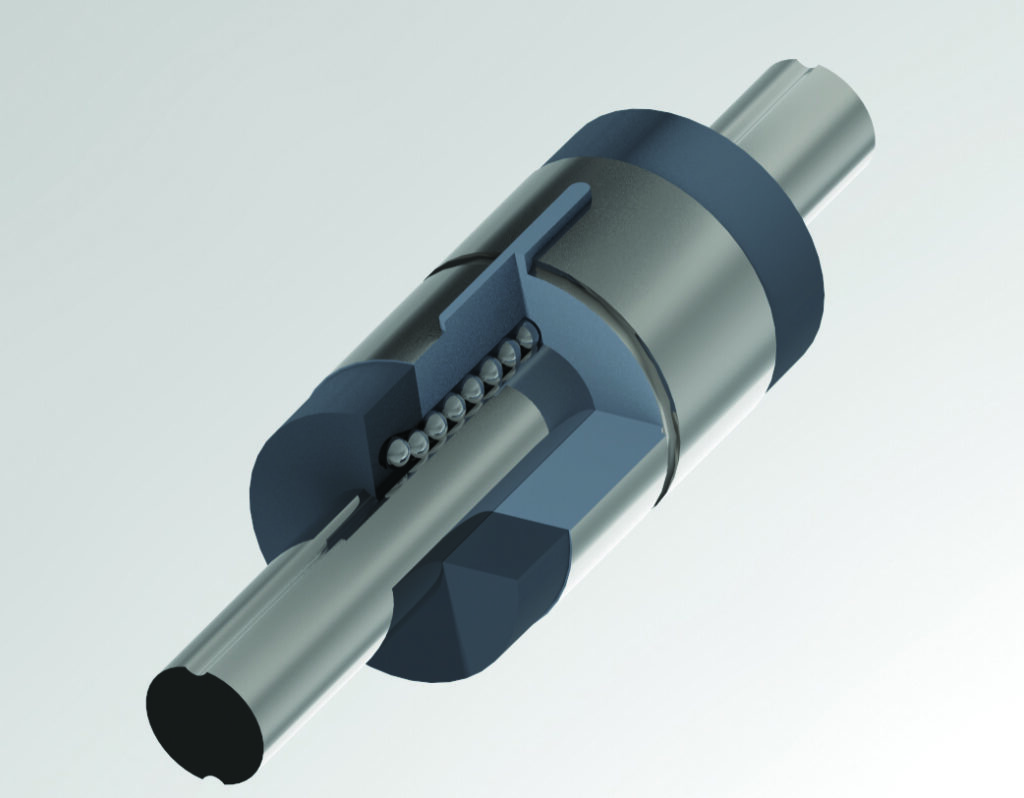
The result is a highly efficient mechanical drive device suitable for various axial-load transfer and torque-transmission applications. Ball splines resist the radial displacements caused by torque loads and need small forces to achieve axial displacement of the spline member while transmitting torque. This makes them capable of high-speed operation under high torsional loads.
Recapturing space with ball-spline compactness
Integrating linear and rotational motion without a ball spline typically requires mounting separate shafts in a dual-stacked, four-bearing architecture built around Cartesian coordinates. This setup takes time to build and test, consumes a lot of space, and can require higher maintenance interaction. Ball splines enable a single-shaft solution that provides greater design flexibility and requires much less space.
Stability: Besides reducing the number of shafts needed, the spline structure adds stability. The solidness of a ball spline provides a cost-effective way to extend a vertical stroke beyond the scope of what a robot might provide. It also enables cantilevered architectures and can add anti-rotational guidance.
Enhancing performance: To those compressed stable assemblies, ball splines bring the characteristic performance advantages of other ballscrew components. The reduced friction enables higher-speed operations, less wear, longer and more predictable life expectancy, less backlash and seizure, and no stick-slip.
Twists and turns: Ball splines are especially appropriate for automation applications that humans might traditionally perform with the twist of a wrist, such as moving a test tube or opening the lid of a sample jar for a laboratory scale. High-speed pick-and-place applications are another common ball-spline use.
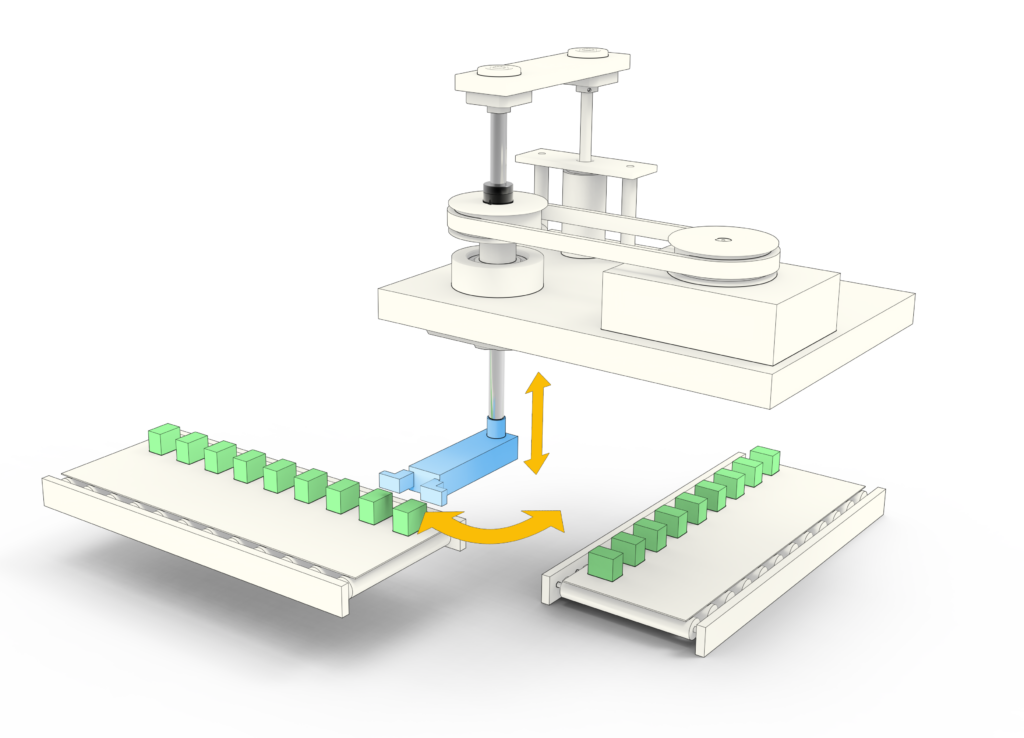
Robots can certainly perform many of the same tasks as ball splines and with greater freedom of movement. Still, if that freedom is not critical to the application, ball splines can offer numerous other benefits and eliminate the high expense of a robot. Ball splines can provide comparable precision in a smaller footprint and move higher loads faster, with more robust mechanics and often at a lower development cost.
Ball-spline specification and customization
Initially, integrating rotary and linear motion resulted from mechanical and electrical engineers collaborating on a solution using two or more shafts. Today, there are various off-the-shelf ball spline options with lengths to 3,000 mm and diameters of 6 to 50 mm.
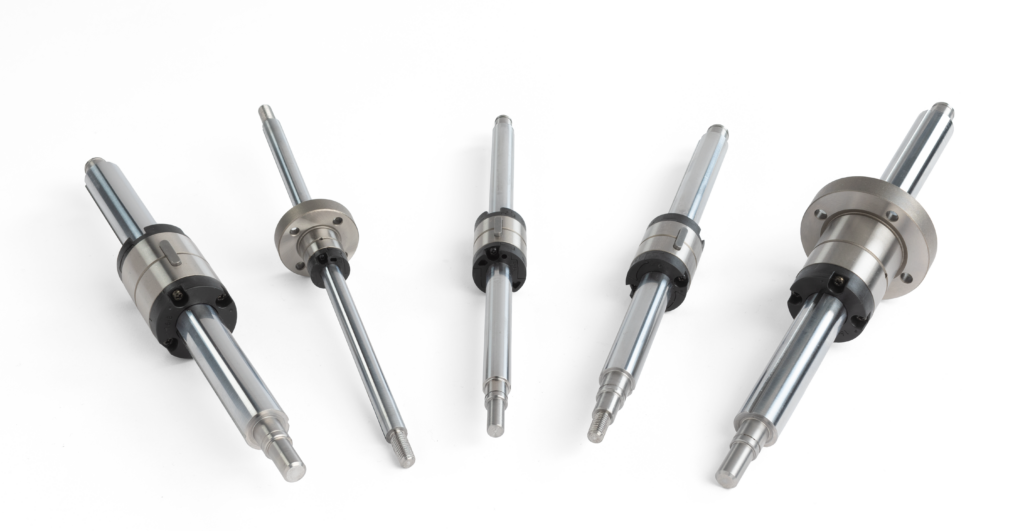
Ball splines are also quite amenable to customization. Depending on the specification, manufacturers can often tap holes, add reductions for radial bearings or coaxial holes, or make other modifications needed to integrate the ball spline unit into the machine.
Back to the future with ball splines’ design flexibility
When designing a solution, the ability to extend a stroke or compress a system may be the key to success. Ball splines provide this game-changing flexibility that designers may not find in a prepackaged multi-shaft assembly. More actions that once required a technician or assembler can now be automated, making those movements safer and more efficient, with better control. These automated solutions are especially relevant amidst today’s rising labor costs, labor shortages, and high absenteeism.
Machine designers should consider ball splines for any application requiring both rotary and linear motion, especially if space is at a premium and stroke, load, high speed, reliability, or durability are critical.
For those already familiar with ball splines, it may be time to revisit their use in new designs. The advances in digital technology make them easier to incorporate into integrated axes of modern systems. For engineers unfamiliar with ball splines, it’s a good idea to review design projects and see if integrating rotary and linear motion on a single shaft could provide space savings, improved cycle time, or better machine reliability.

Motion | motion.com/designworld
About the authors
Charles Isaac is Global Product Line Manager of Linear Bearings and Guides at Thomson Industries Inc. Charles is responsible for the short- and long-term strategic direction of the linear bearings and guides business, including the product roadmap.

He earned his B.S. in Manufacturing Engineering from Fairmont State University and an MBA from Walden University. Charles has been with Thomson for three years.
Chris Diak is the Southeast Automation Manager at Motion and has worked in the electrical and automation field for 27 years — the last 25 at Motion.
He earned his B.S. in Electrical Engineering from Clemson University.

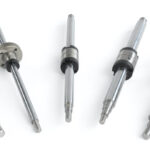
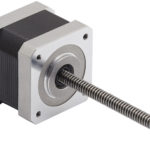
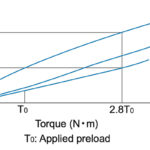

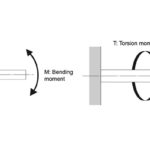

Leave a Reply
You must be logged in to post a comment.